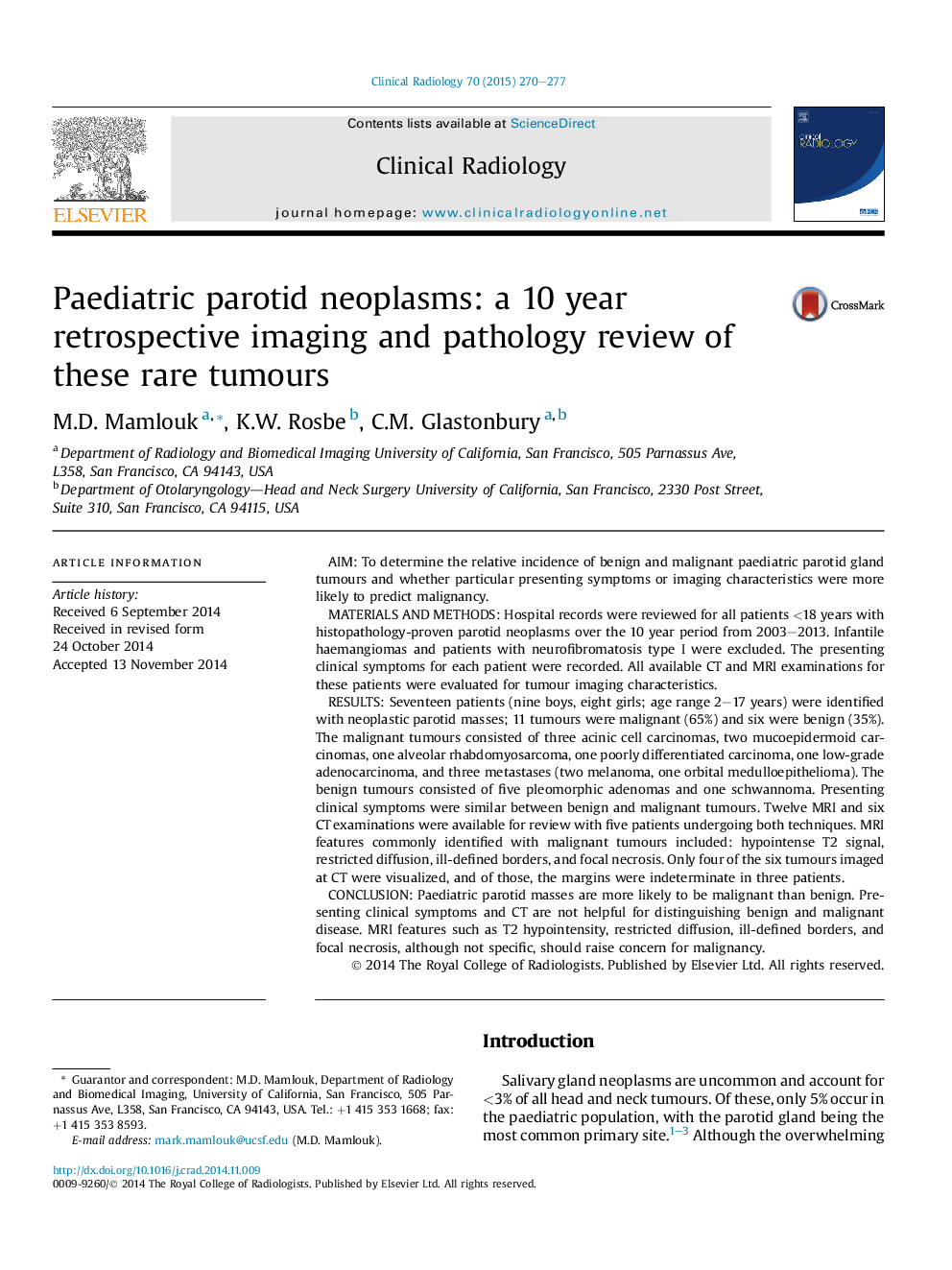| Article ID | Journal | Published Year | Pages | File Type |
|---|---|---|---|---|
| 3981582 | Clinical Radiology | 2015 | 8 Pages |
•Pediatric parotid tumors are rare.•Pediatric parotid masses are more likely to be malignant than benign.•Clinical symptoms and CT are not helpful in determining tumor pathology.•Certain MR imaging features should raise concern for malignancy.
AimTo determine the relative incidence of benign and malignant paediatric parotid gland tumours and whether particular presenting symptoms or imaging characteristics were more likely to predict malignancy.Materials and methodsHospital records were reviewed for all patients <18 years with histopathology-proven parotid neoplasms over the 10 year period from 2003–2013. Infantile haemangiomas and patients with neurofibromatosis type I were excluded. The presenting clinical symptoms for each patient were recorded. All available CT and MRI examinations for these patients were evaluated for tumour imaging characteristics.ResultsSeventeen patients (nine boys, eight girls; age range 2–17 years) were identified with neoplastic parotid masses; 11 tumours were malignant (65%) and six were benign (35%). The malignant tumours consisted of three acinic cell carcinomas, two mucoepidermoid carcinomas, one alveolar rhabdomyosarcoma, one poorly differentiated carcinoma, one low-grade adenocarcinoma, and three metastases (two melanoma, one orbital medulloepithelioma). The benign tumours consisted of five pleomorphic adenomas and one schwannoma. Presenting clinical symptoms were similar between benign and malignant tumours. Twelve MRI and six CT examinations were available for review with five patients undergoing both techniques. MRI features commonly identified with malignant tumours included: hypointense T2 signal, restricted diffusion, ill-defined borders, and focal necrosis. Only four of the six tumours imaged at CT were visualized, and of those, the margins were indeterminate in three patients.ConclusionPaediatric parotid masses are more likely to be malignant than benign. Presenting clinical symptoms and CT are not helpful for distinguishing benign and malignant disease. MRI features such as T2 hypointensity, restricted diffusion, ill-defined borders, and focal necrosis, although not specific, should raise concern for malignancy.
